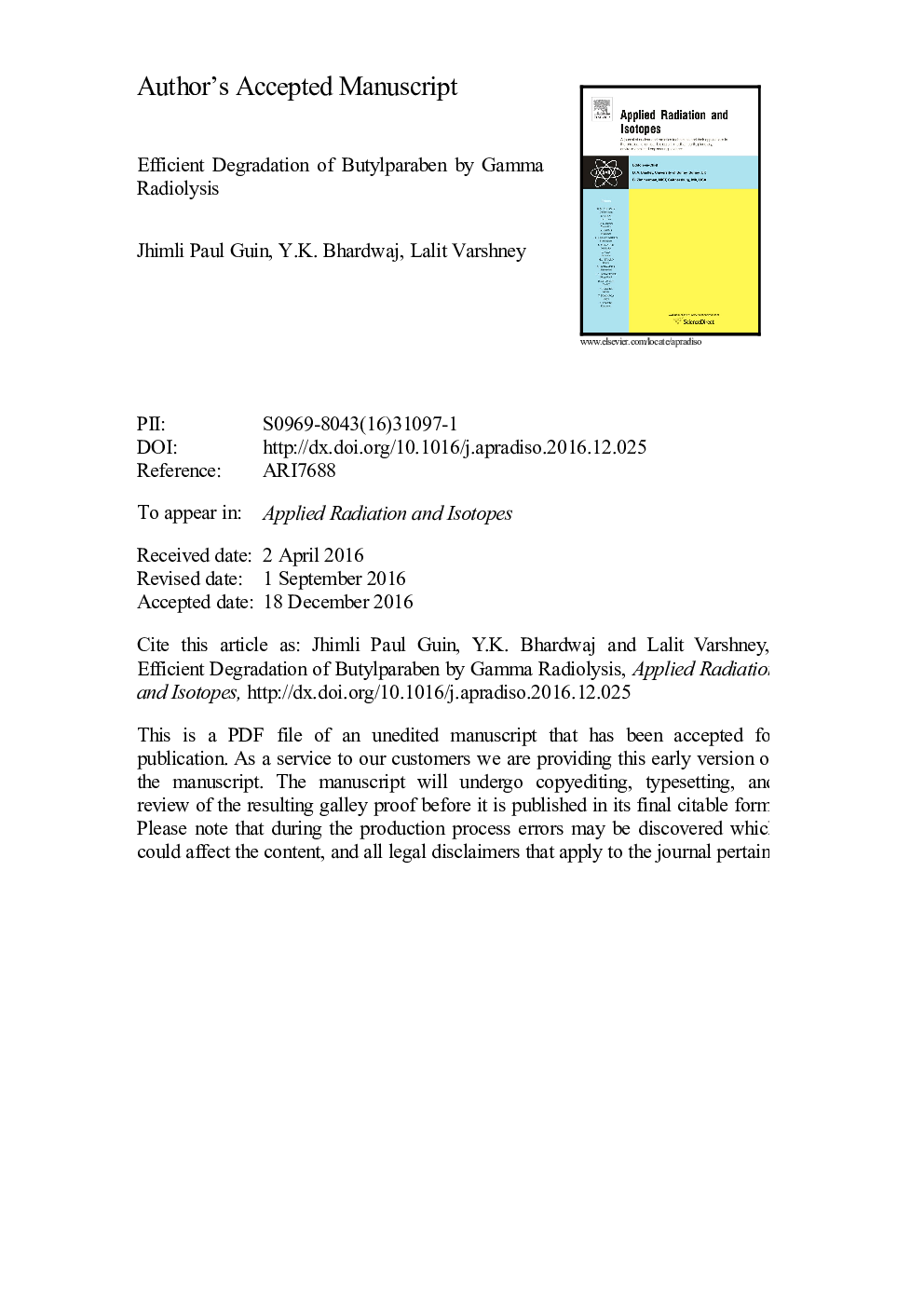| Article ID | Journal | Published Year | Pages | File Type |
|---|---|---|---|---|
| 5497953 | Applied Radiation and Isotopes | 2017 | 25 Pages |
Abstract
Gamma radiolysis and ozonolysis are two competitive advanced oxidation processes for degradation of organic pollutants present in the ground water. In this paper, the gamma radiolytic degradation of an emerging organic pollutant Butylparaben (BP) in aqueous solution has been investigated for the first time at different absorbed doses. The effect of the absorbed dose rate in the degradation and mineralization of BP has been investigated. About 65% mineralization of BP was observed at absorbed dose of 70 kGy and dose rate of 0.7 kGy hâ1. Interestingly, turbidity appeared in the solution during radiolysis at doses higher than 2 kGy, which disappeared again at very higher dose (~90 kGy) making the solution again transparent. At lower dose rate of 0.175 kGy hâ1 the turbidity was appeared at much lower dose about 1 kGy. However, the dose rate showed no effect in the dose of the disappearance of the turbidity. The hydrophobic fragments insoluble in water were generated during the initial stage of gamma radiolysis and those were completely mineralized to CO2 and H2O by direct absorption of gamma radiation. About 90 kGy dose was required to achieve ~90% mineralization of BP. On the contrary, maximum 50% mineralization was achieved after 5 h of ozonation at the O3 flow rate of 0.5 L minâ1 at pH 7.5 and it remained even constant upon prolonged ozonation. The oxygen-equivalent-chemical-oxidation-capacity (OCC) was used as the parameter to compare the % mineralization efficiencies of the two oxidative processes studied here and the gamma radiolysis was found to be more efficient between those processes. The phytotoxicity of the treated BP solution to agricultural seeds showed that the radiolytically generated fragments were less toxic compared to ozonolytically generated fragments. Thus gamma radiolysis is effective for reducing the organic burden and the toxicity of water polluted with emerging pollutants like BP.
Related Topics
Physical Sciences and Engineering
Physics and Astronomy
Radiation
Authors
Jhimli Paul Guin, Y.K. Bhardwaj, Lalit Varshney,
